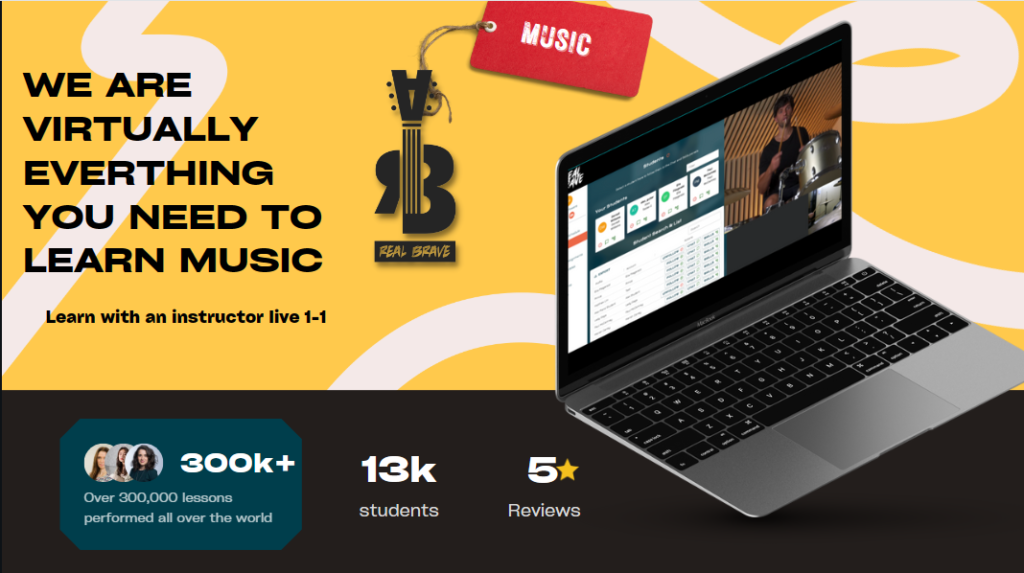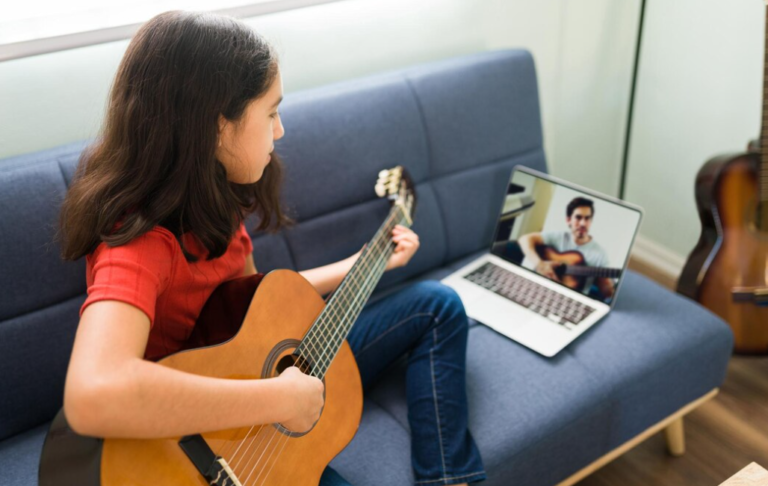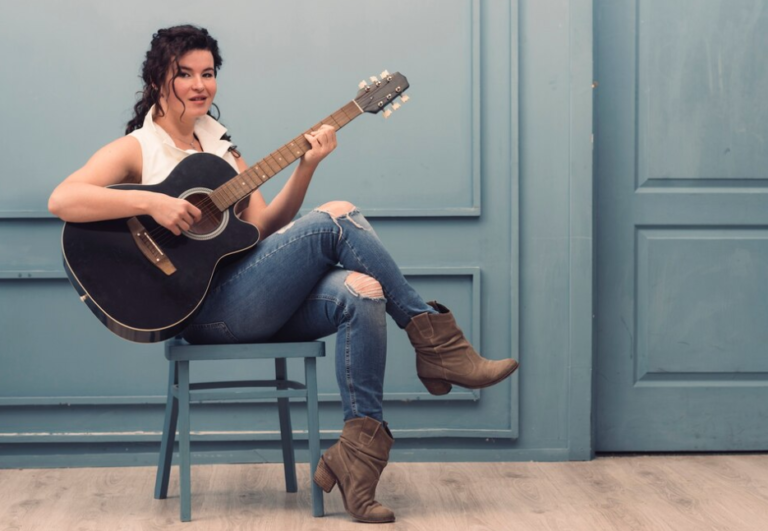Music Theory: Everything You Need To Know About
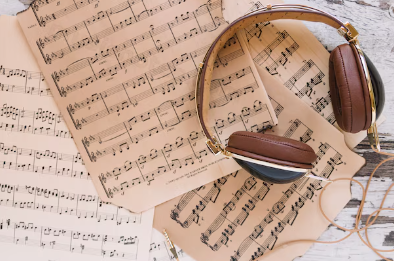
What is Music Theory?
When you’re learning music, it might feel like you’re unlocking a new language. Music theory is that language—a set of rules that helps us understand and communicate musical ideas. Whether you’re picking up an instrument for the first time or refining your skills, understanding the basics of music theory will make the journey smoother. Let’s break down the essential elements of music theory to get you started.
What is Music?
Music is the art of arranging sounds to blend harmony, melody, rhythm, and expressive content. It’s a universal phenomenon found in all human societies, created and performed with various instruments, including the human voice.
Music allows personal expression, cultural preservation, and communication. It plays a crucial role in social events, religious ceremonies, and entertainment, and often accompanies media like films, TV shows, and video games.
At its core, music combines “sound” and “silence” over time, using various techniques and principles explored in this book.
Sound and Silence
To understand music theory, we need to start with the basics: sound and silence.
Sound in music theory refers to the audible vibrations produced by musical instruments, voices, or other sources. It encompasses melodies, harmonies, rhythms, and timbres that create aural experiences. Without sound, music would not exist.
Silence, on the other hand, is equally significant. It describes the absence of sound and provides contrast, shaping the overall musical experience. Silence can indicate a pause, a moment of rest, or a deliberate absence of sound. In fact, silence gives meaning to musical sound by creating space between notes and phrases. Without it, music would lack depth and dynamics.
Musical Notes
Musical notes are the building blocks of music. In musical notation, notes indicate the pitch and duration of sounds.
By recognizing these notes, musicians and performers can understand, analyze, and play a piece of music. Notes with the same frequency belong to the same pitch class.
The naming of music notes varies around the world.
In many European and Latin American countries, as well as in Arabic and Persian-speaking regions, the solfege system is used, naming the notes do-re-mi-fa-sol-la-si.
In English and Dutch-speaking countries, such as Canada and the USA, notes are denoted by the letters A, B, C, D, E, F, and G.
Notes are written on a musical staff, which we’ll learn about next.
The Musical Alphabet (A-G)
Music has its own set of letters, just like the English language. Seven notes make up the musical alphabet: A, B, C, D, E, F, and G. The foundational notes of all music are those that repeat in a cycle. For example, after G, the next note is A again, but at a higher pitch. Understanding this sequence will help you read and play music more easily.
Introducing the Staff
The musical alphabet is written on a staff, which consists of five lines and four spaces. Each line and space represents a different note. For example, on the treble staff, the notes on the lines from bottom to top are E, G, B, D, and F, while the notes in the spaces are F, A, C, and E.
Here’s a basic look at the staff:
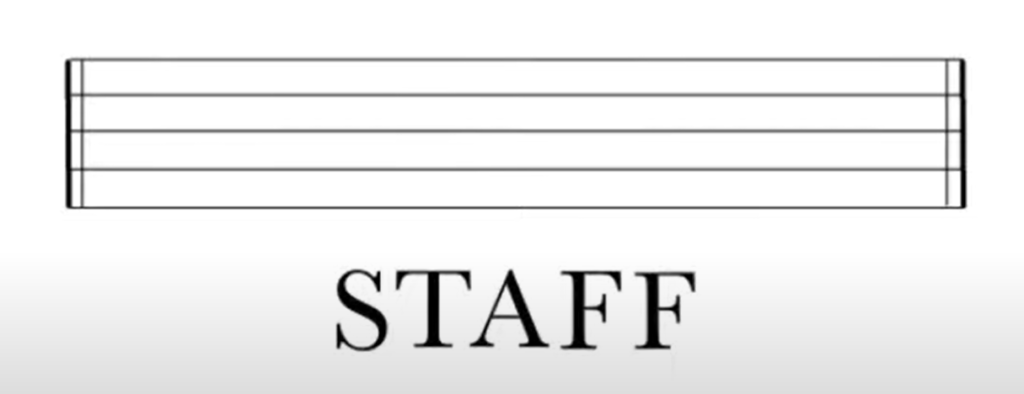
When you see a note on a specific line or space, it corresponds to a specific letter in the musical alphabet.
Lines and Spaces
As we said prior on the staff, the lines and spaces are named according to their position. Starting from the bottom, the lines are named E, G, B, D, F, and the spaces are named F, A, C, E.
A helpful way to remember the lines is the phrase “Every Good Boy Does Fine”. For the spaces, just remember that they spell out FACE.
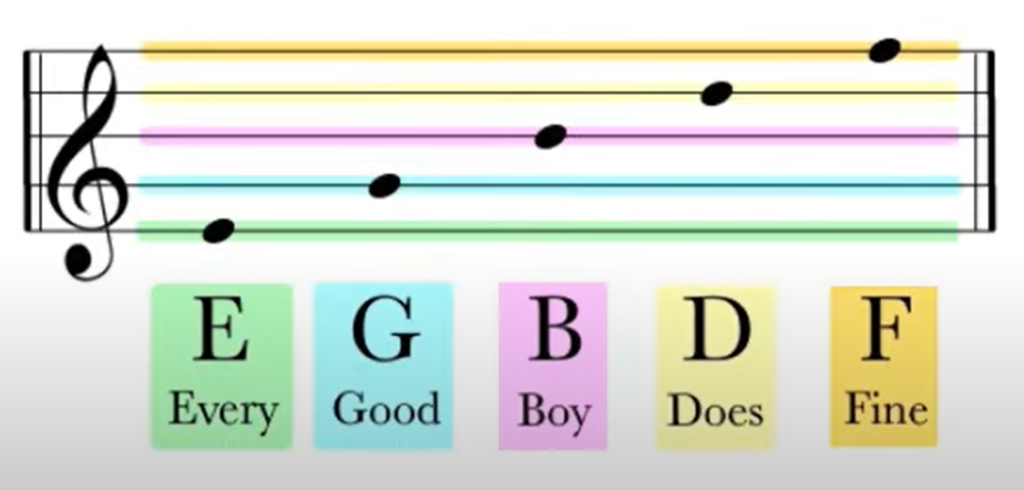
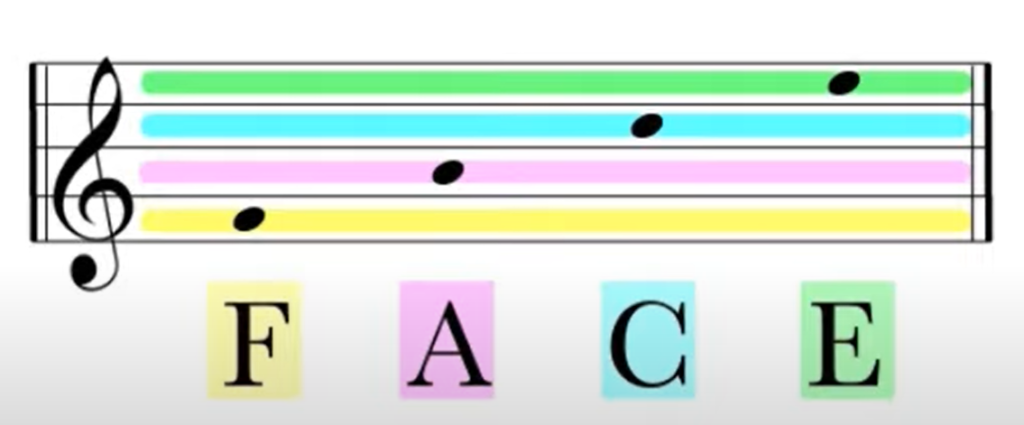
Final Thoughts
To recap:
- Music is made up of sound and silence.
- A sound is created by vibrations, and silence creates pauses.
- Musical notes represent specific pitches.
- The “musical alphabet” consists of seven letters: A, B, C, D, E, F, and G.
- The “staff” is a set of five lines and four spaces where notes are written.
- Each line and space on the staff corresponds to a note in the musical alphabet.
By understanding these basics, you’re well on your way to reading and creating music. Keep practicing these fundamental concepts, and you’ll build a strong foundation for all the music theory topics to come. Happy learning!
If you’re interested in learning an instrument, at Real Brave, we offer an incredible experience like no other place in music lessons for kids and adults by guiding them from the beginning stages of getting to know an instrument all the way through performing for family and friends on stage. Our instructors come from all over the world, bringing extensive experience on a wide range of instruments. Click below and book a free lesson with us!
Author: Daniel Powers Jr, the founder of Real Brave™, serves as the chief inspiration to thousands of students in the Real Brave music instruction program. He’s also the visionary behind PracticePad™, an online platform for live one-on-one online music lessons, lesson tracking, and scheduling. Beyond his entrepreneurial pursuits, Daniel leads a non-profit organization that provides formerly homeless children with access to music education, making a profound impact on their lives. His unwavering dedication to music, innovation, and education continues to inspire individuals to reach their fullest potential while creating positive change in communities. Follow Real Brave on all the socials:
youtube.com/@realbraveinc
twitter.com/realbraveinc
https://www.tiktok.com/@realbraveinc
instagram.com/realbraveaudio
facebook.com/realbraveinc
